Yukon gold miners are unearthing mummified ancient creatures and truckloads of fossils from the Ice Age. Take a look.
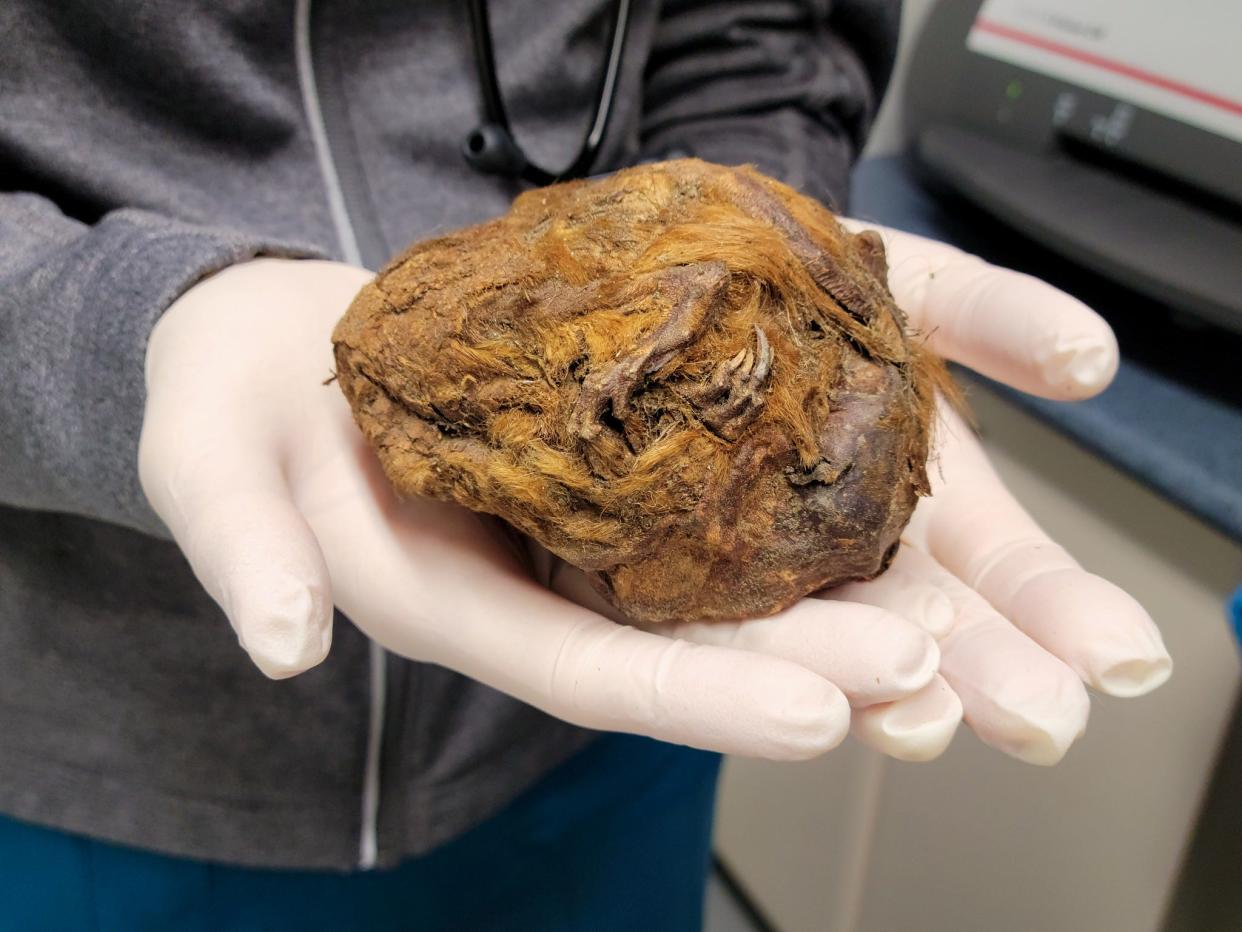
Gold miners in the Yukon are discovering mummified ancient animals from the Ice Age.
Paleontologists often gather truckloads of fossils from the mines, but mummies are special and rare.
Photos from inside the gold mines and the lab offer a glimpse at the ancient past.
Miners are digging up more than just gold in the Yukon, Canada's frigid northwestern territory bordering Alaska.
They keep discovering ancient bones and mummified animals, including a perfectly frozen 57,000-year-old wolf pup and a ball of fur and bones that used to be a squirrel.
These creatures are remarkably well-preserved snapshots of the Ice Age, when glaciers covered northern North America.
Because most of Earth's water was trapped in those glaciers, sea levels were so low that they exposed a vast grassy steppe stretching from the Yukon to Siberia, where megafauna like lions, mammoths, and scimitar cats roamed.
Now paleontologists can study those animals' frozen and mummified remains, revealing the Ice Age's secrets.
In the Yukon gold fields, miners are making major paleontology discoveries.
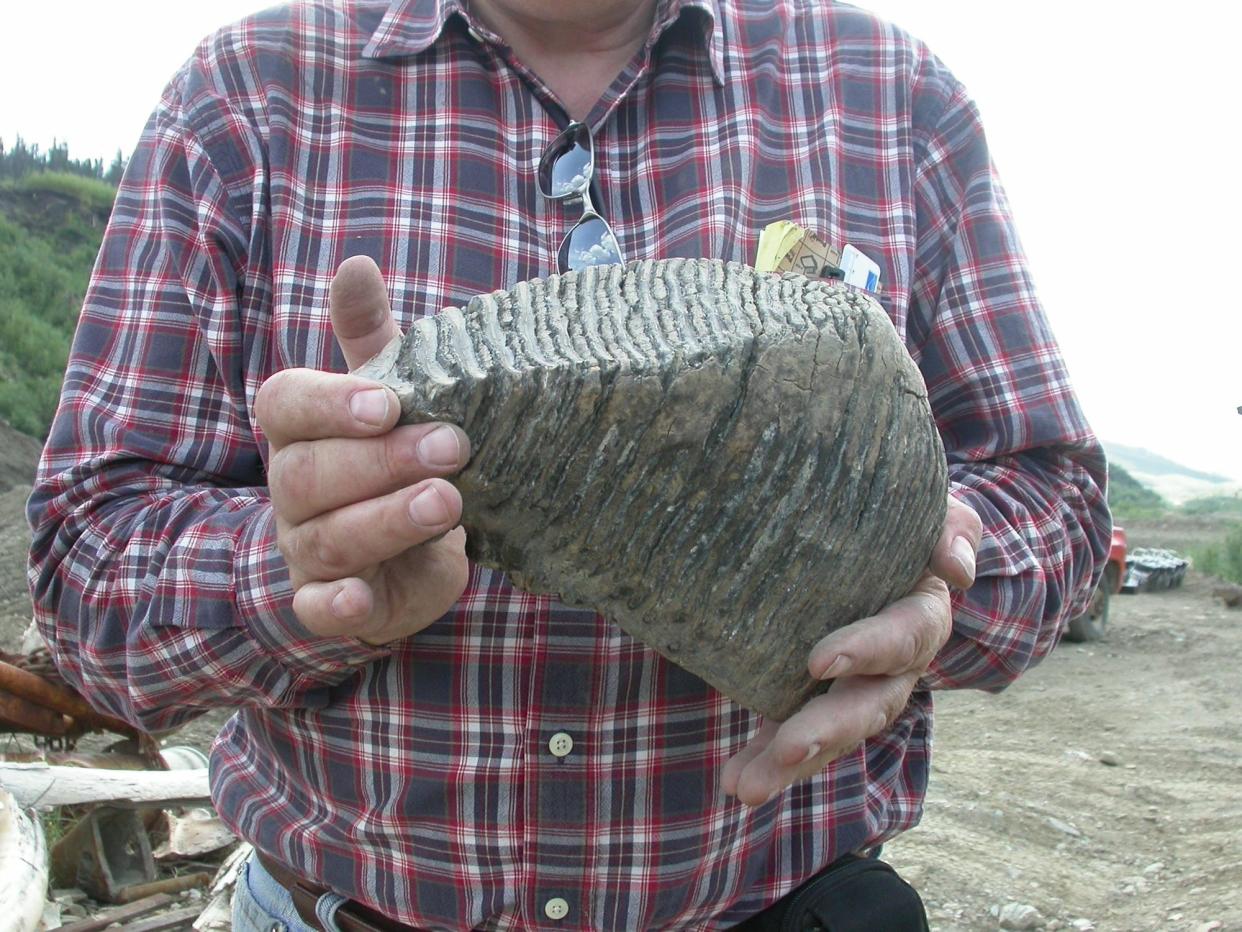
"As they're actively gold mining, they're constantly uncovering the remains of Ice Age animals like woolly mammoths," Grant Zazula, a paleontologist with the government of Yukon who retrieves and studies these mummies, told Business Insider.
Gold miners dig through a frozen layer of soil called permafrost, where some animals have been preserved since the Ice Age.
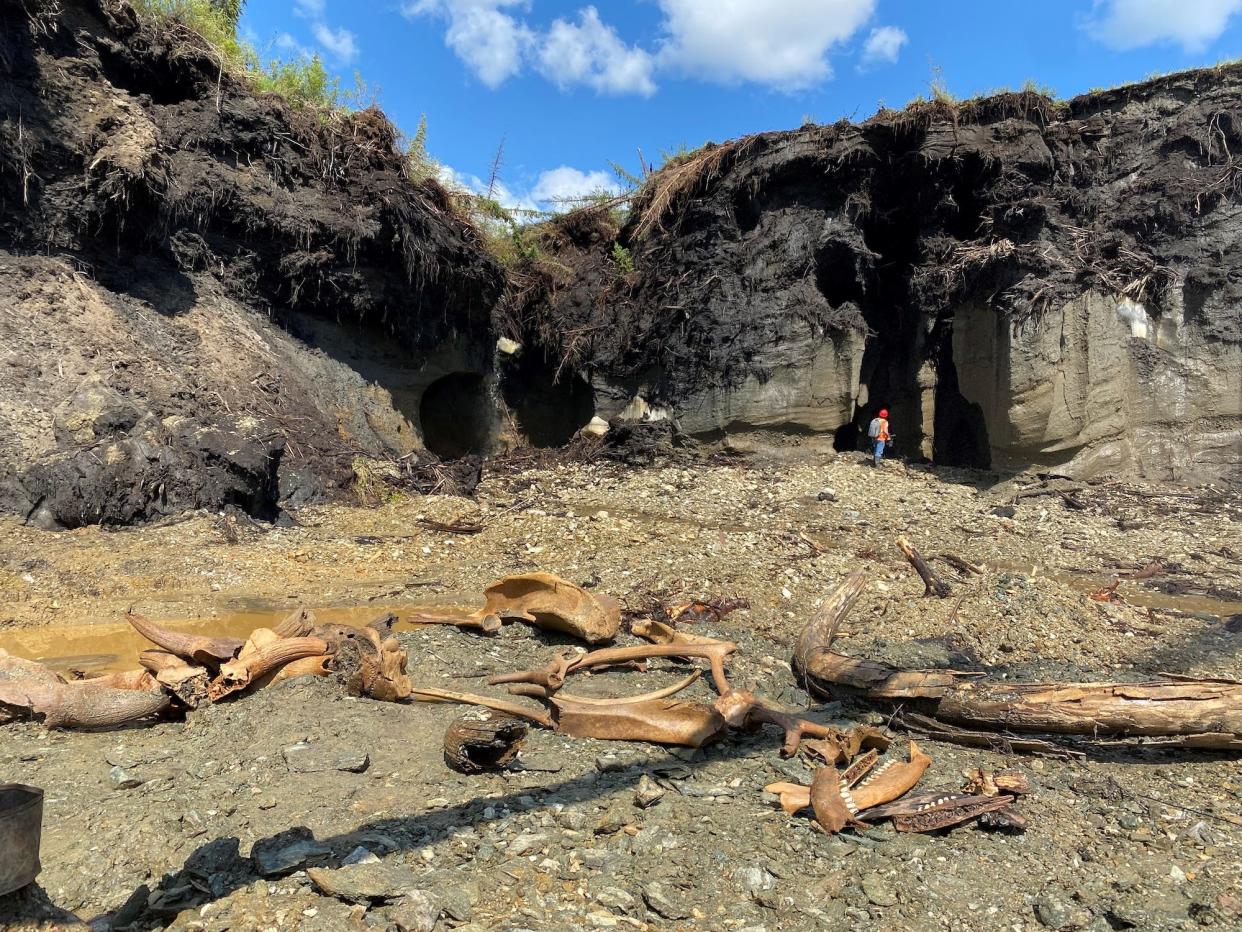
Miners find so many fossils and bones in the permafrost that setting them aside for paleontologists is a routine part of their operations. Zazula said mine managers know to call his team if they find anything exceptional.
"Without gold mining, it would be impossible to excavate through these frozen valleys," he added. "So using all this heavy equipment, they do all the excavation, and we collect all the fossils that are turned up as a result of that."
As early as the 1890s, during the Klondike gold rush, miners were unearthing mammoth skulls and tusks.
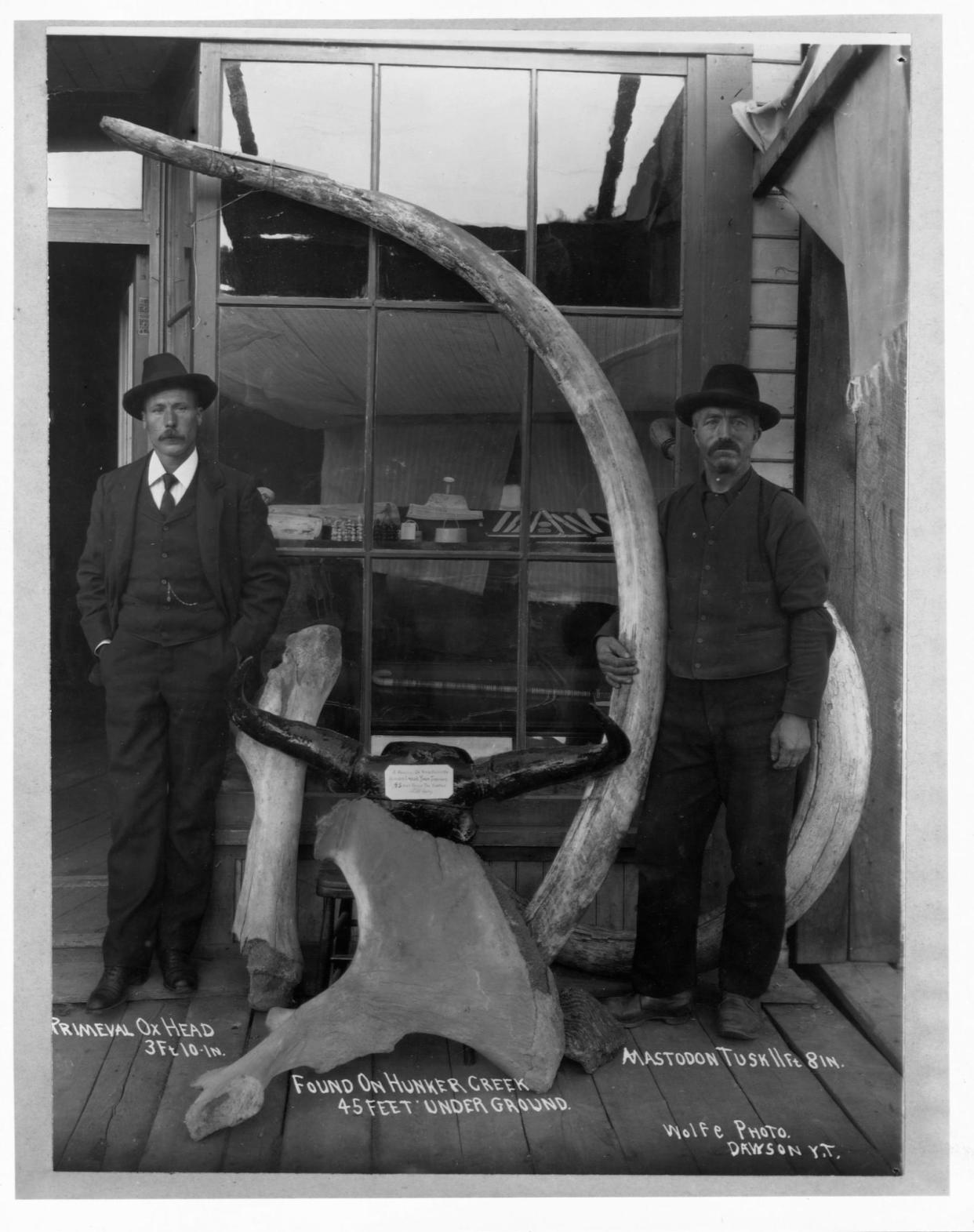
"It's also a real part of the gold-mining culture," Zazula said.
Zazula says that in photos from the turn of the 20th century, where gold-rush miners pose with mammoth tusks, it's clear the fossils are a "source of pride."
"I think that still continues today," he added.
But recent discoveries of mummified animals, like this caribou, are taking gold-mine paleontology to the next level.
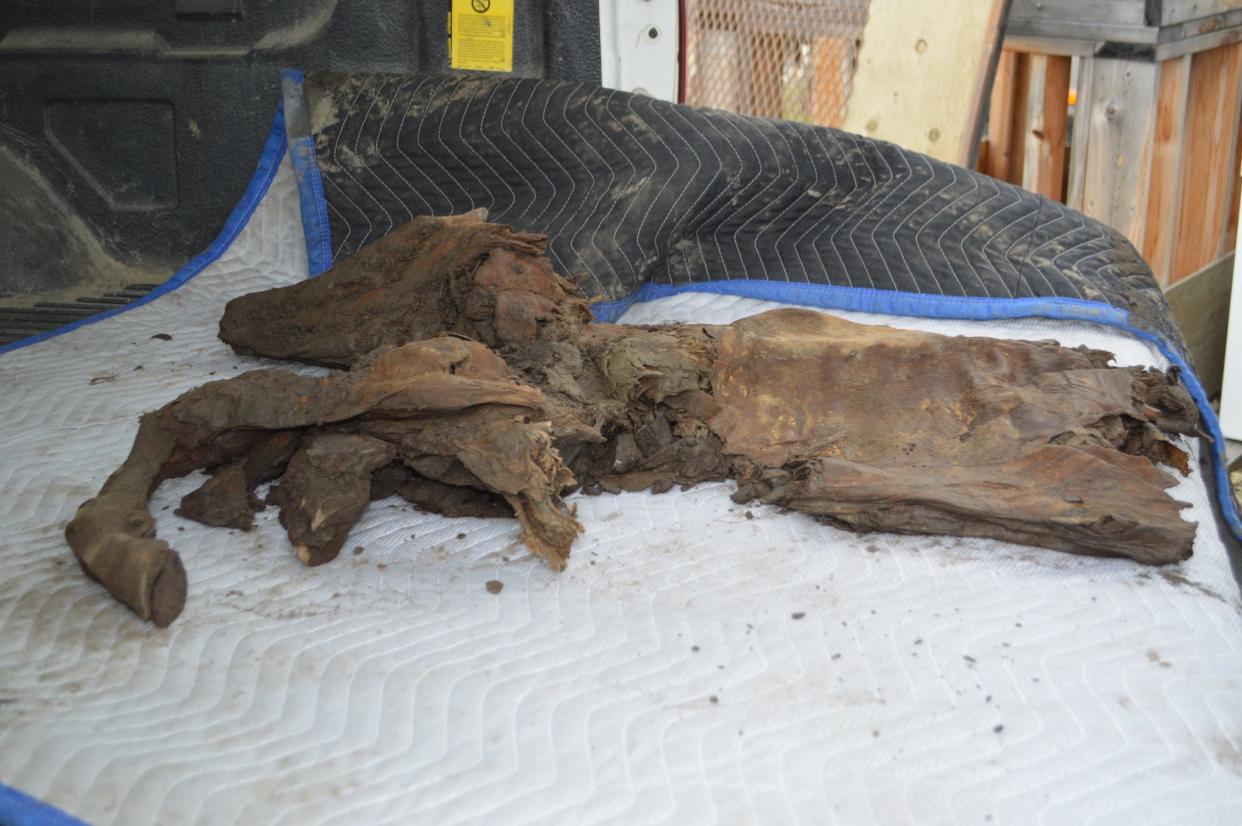
This caribou calf, found in the summer of 2016, was the second in what Zazula said was a series of "super exciting" mummified-animal discoveries in the Yukon.
It all started with this tiny doglike animal. "We weren't quite sure what it was at the beginning," Zazula said.
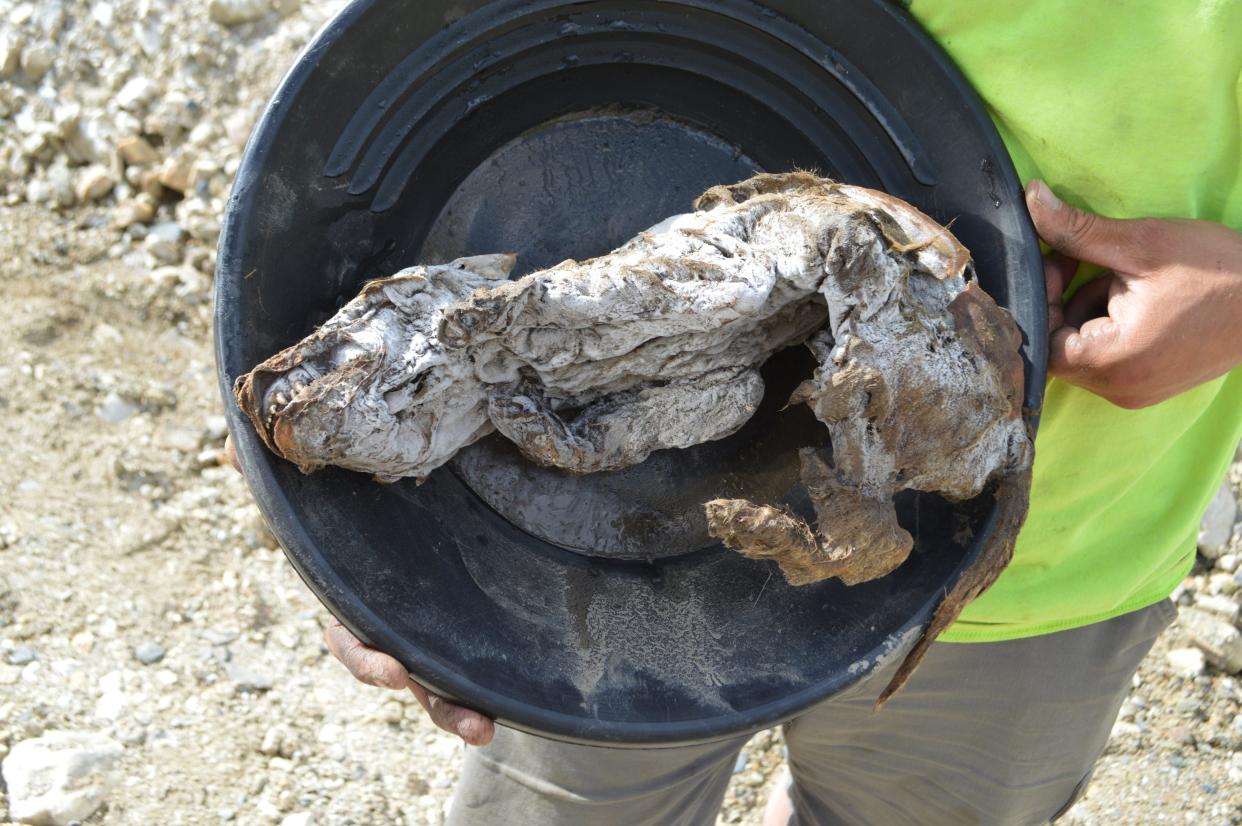
The creature turned up in the mines in July 2016.
"The gold miner who found it thought it might've been just a dog, like a dog from the gold rush or something," Zazula said. "But we're like, eh, I don't know. Those teeth look pretty wolflike."
Indeed, genetic analysis revealed the little creature was a wolf pup from the Ice Age.
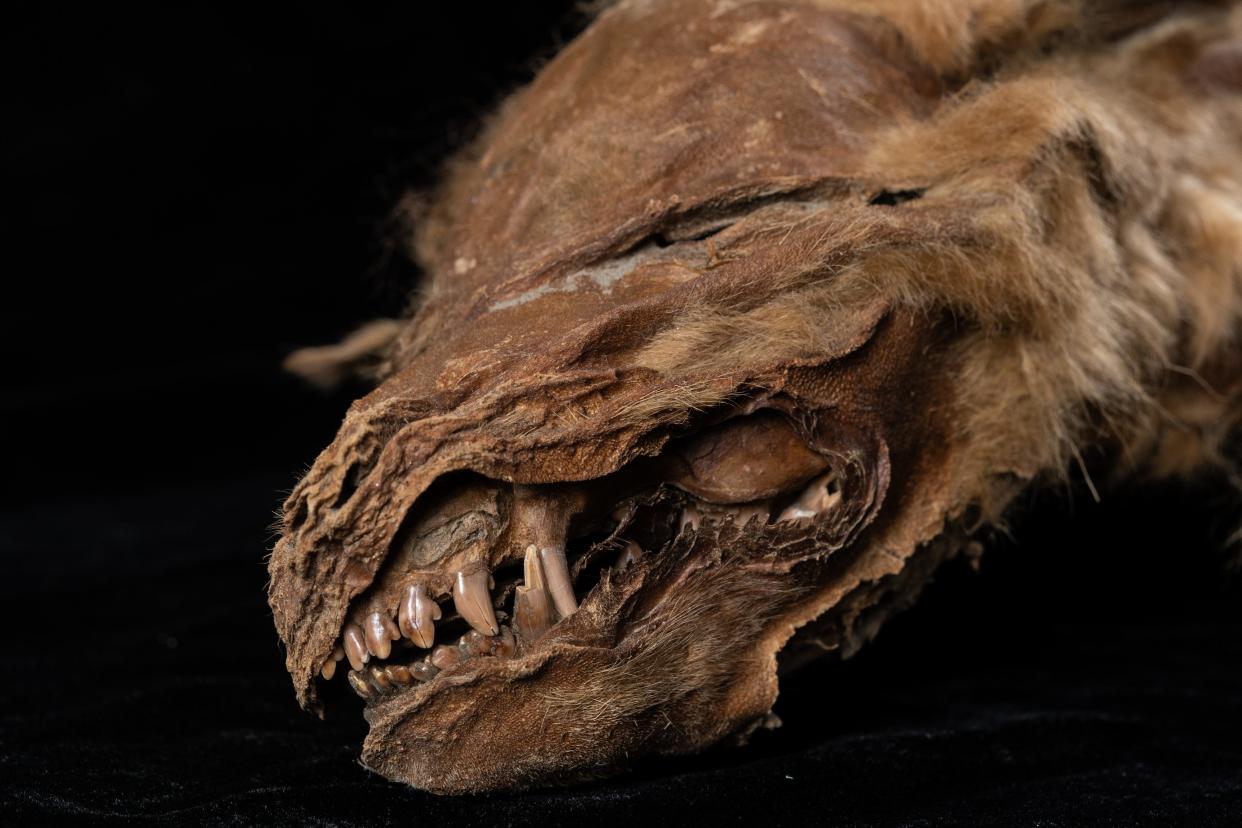
"She is complete, with all her soft tissues intact and even her fur," Julie Meachen, a professor of anatomy at Des Moines University, told BI at the time. "This is a very rare find."
Indigenous locals from the Tr'ondëk Hwëch'in people named the pup Zhùr, which means "wolf" in the Hän language.
Researchers think the 7-week-old pup was in her den when it collapsed and killed her.
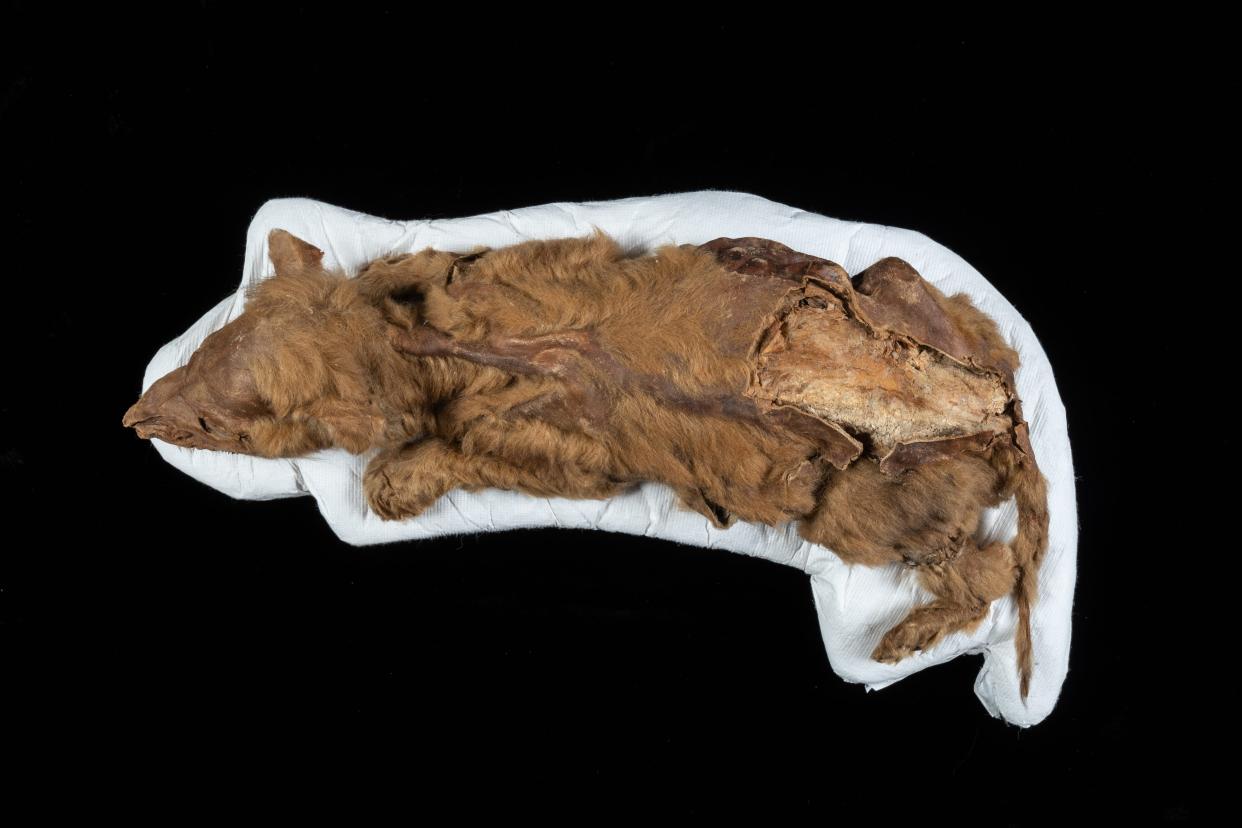
That could be why the wolf pup's body was so well preserved: It wasn't on the surface decomposing or getting eaten but was frozen underground very quickly.
Some findings are at first even more mysterious than Zhùr, like this mangled ball of fur and claws.

"It's not quite recognizable until you see these little hands and these claws, and you see a little tail, and then you see ears," Zazula told CBC last year.
X-ray scanning revealed that the grapefruit-sized lump was a mummified curled-up ground squirrel from 30,000 years ago.
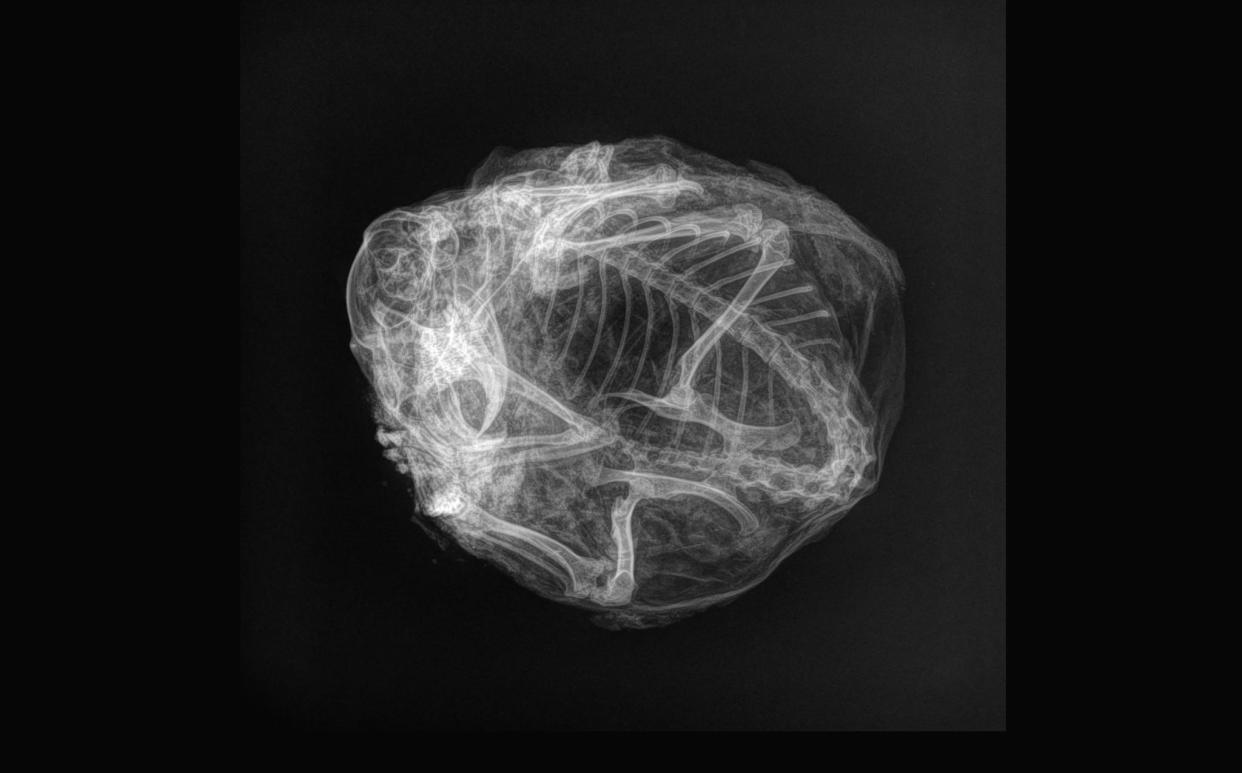
"I'm really impressed that someone recognized it for what it was," Jess Heath, a veterinarian who conducted the X-ray, told the CBC. "From the outside, it just kind of looks like a brown blob. It looks a bit like a brown rock."
Like Zhùr, the squirrel probably died in its underground burrow.
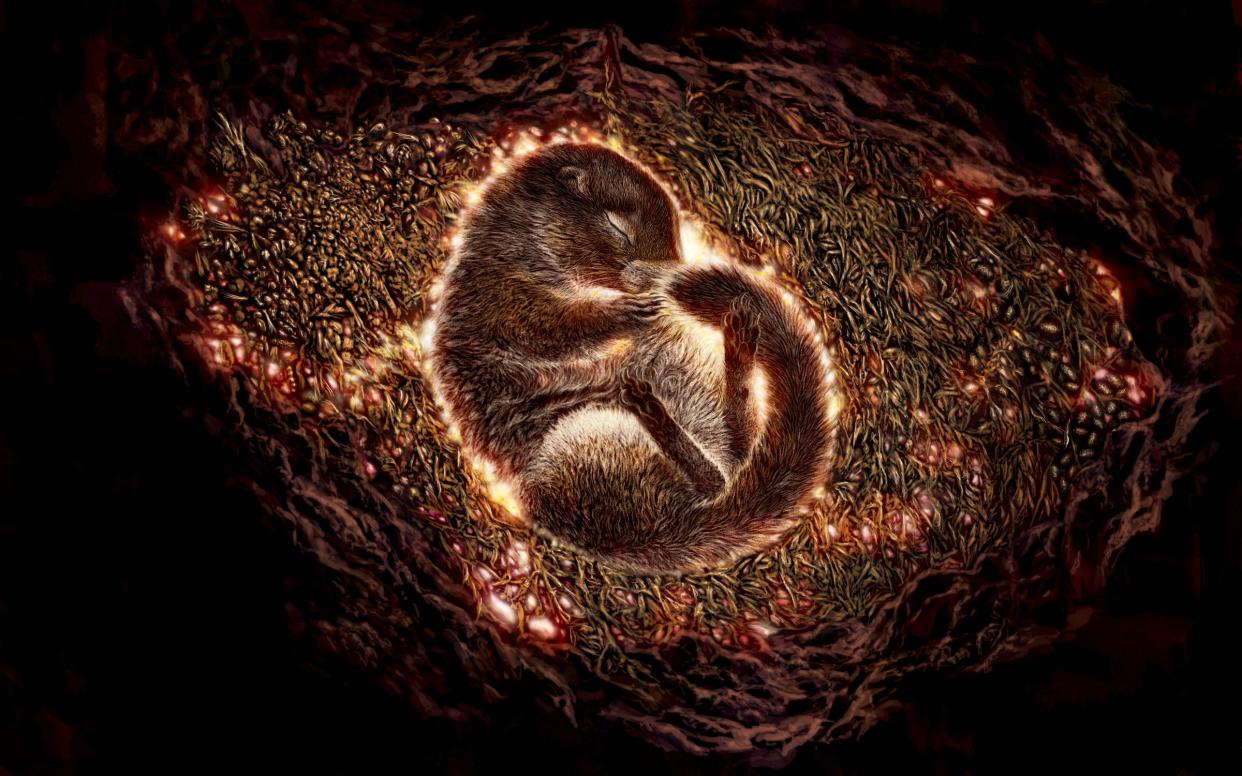
This species of Arctic ground squirrel still lives throughout the Yukon, hibernating in burrows. Many of their underground nests have been preserved since the Ice Age, but finding a fully preserved squirrel is rare.
The Yukon's biggest finding yet is the preserved body of a baby mammoth.
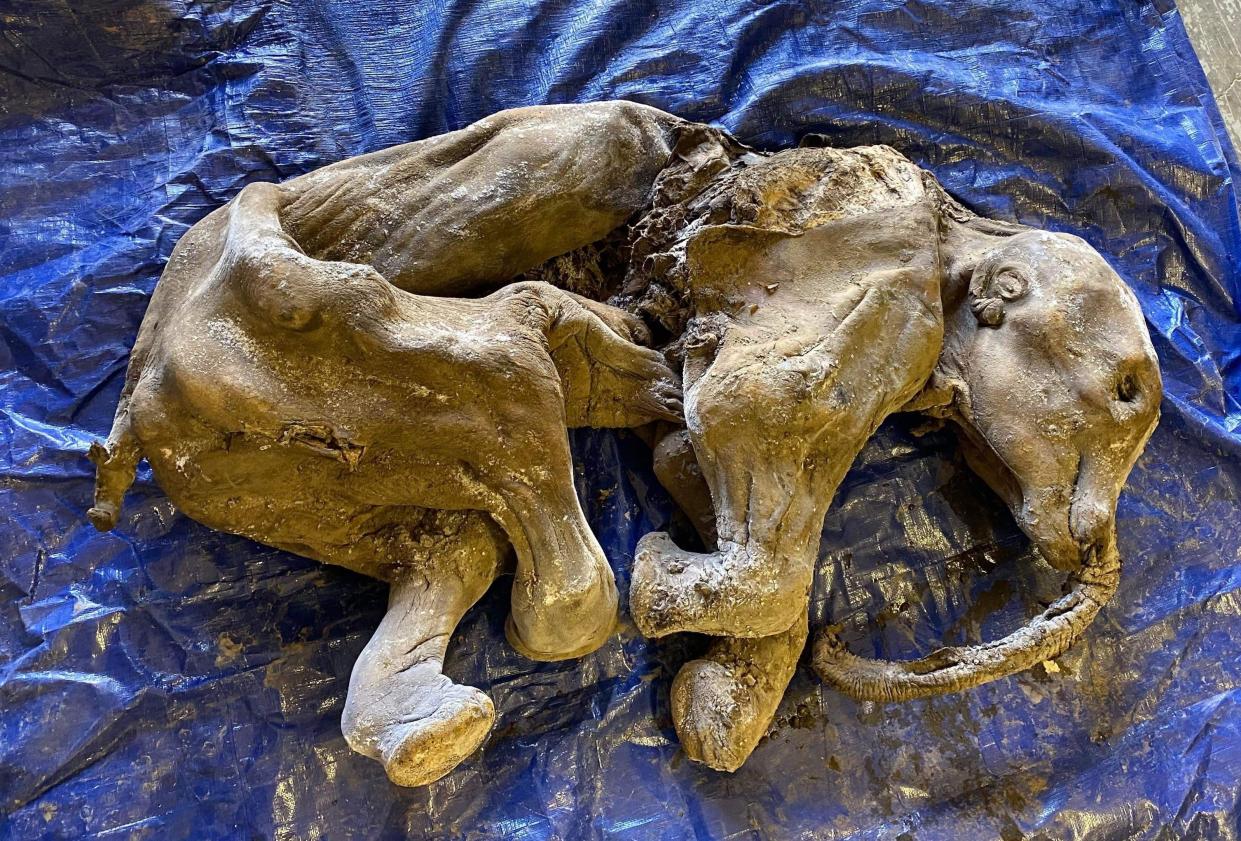
As with most of these discoveries, gold miners found the mammoth within traditional Tr'ondëk Hwëch'in territory. The Indigenous nation's elders were on the scene long before Zazula, who had to drive six hours to reach it.
"Doing what I do, it's kind of like your dream come true," Zazula said. "You get to actually see a mammoth for real, and it was very emotional."
He added, "I never thought I'd ever get that phone call."
Tr'ondëk Hwëch'in leadership named the mammoth Nun Cho Ga, meaning "big animal baby" in the Hän language.
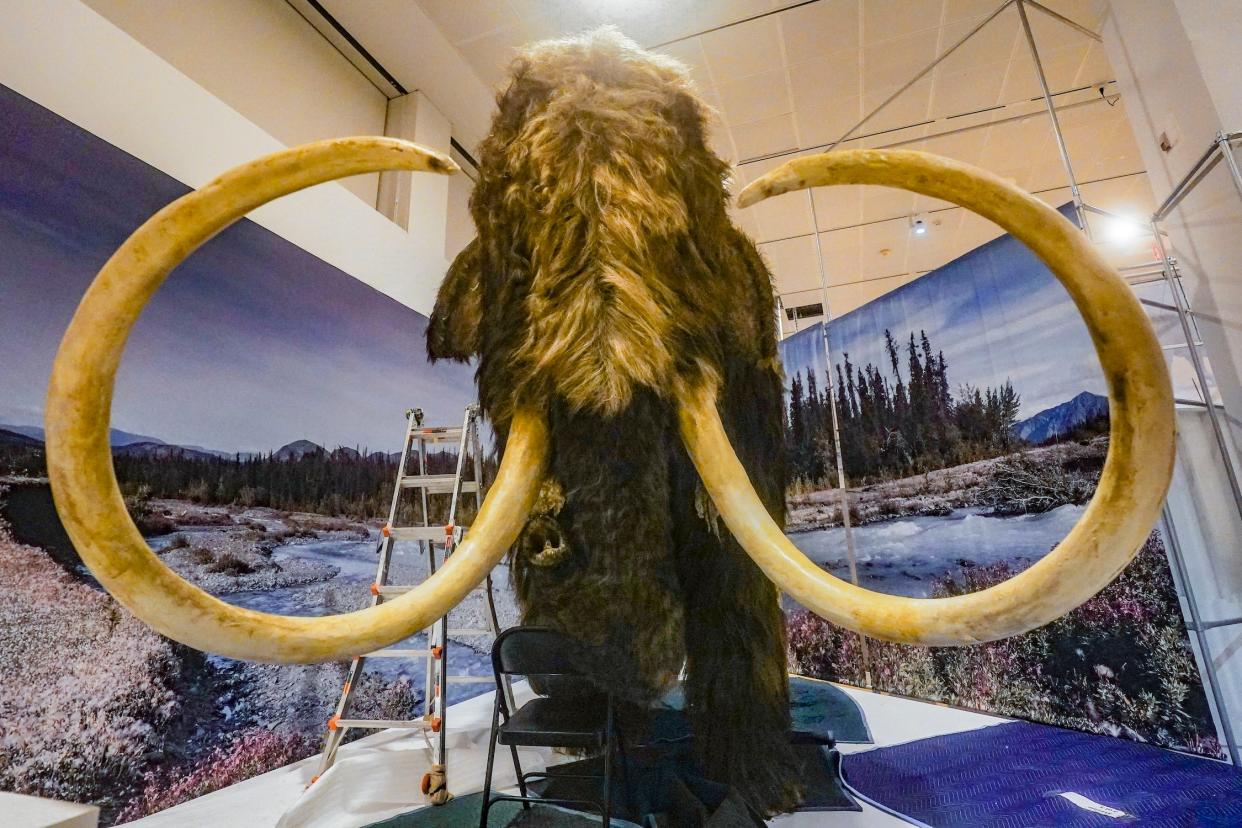
Where the mammoth was embedded in the permafrost, it was surrounded by fossilized grass and twigs, indicating it had probably been buried in a landslide.
The historic discovery of Nun Cho Ga finally put North America's permafrost findings on par with Russia's.
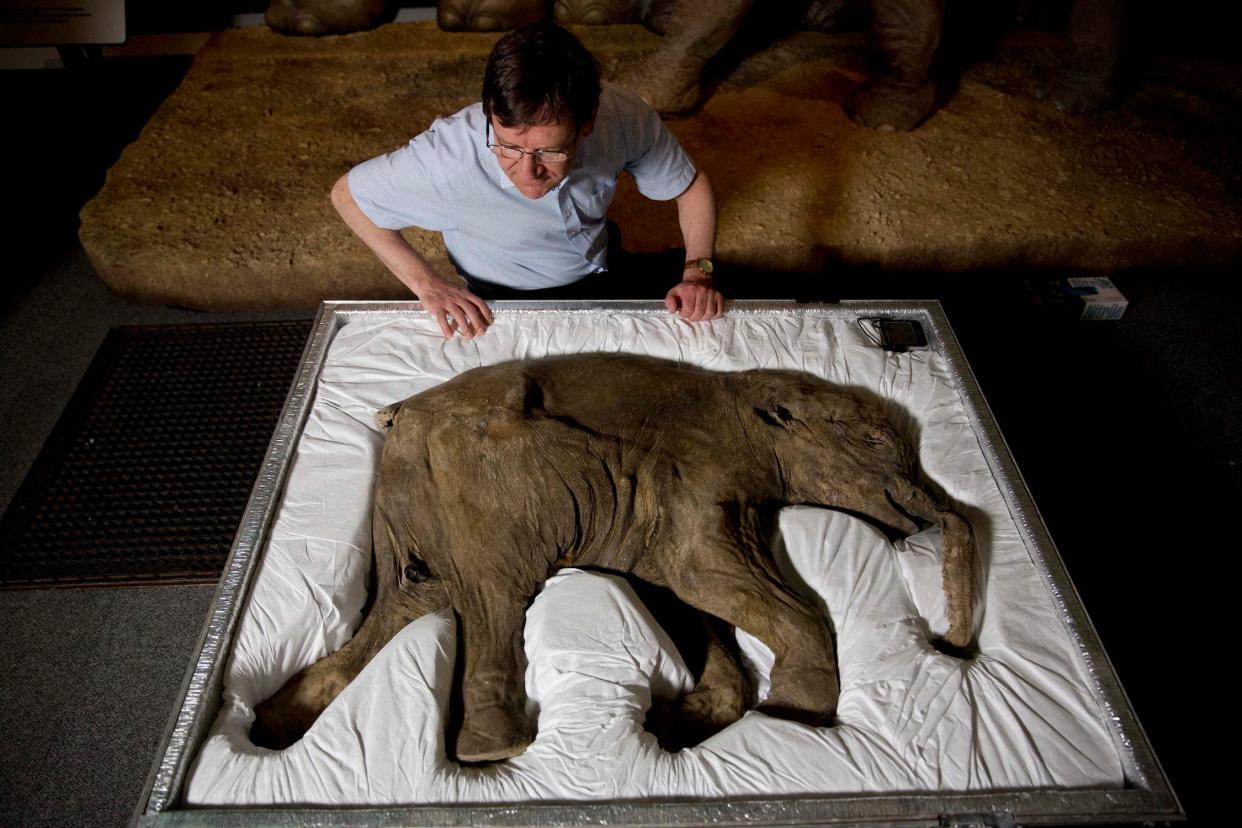
In the Siberian permafrost, miners and reindeer herders have discovered intact mummies of all kinds of big Ice Age animals — a wolf, a woolly rhinoceros, even a cave bear.
They even had their own perfect baby-mammoth mummy, named Lyuba, discovered in 2007.
"We were constantly getting jealous of the cool stuff found in Siberia," Zazula said.
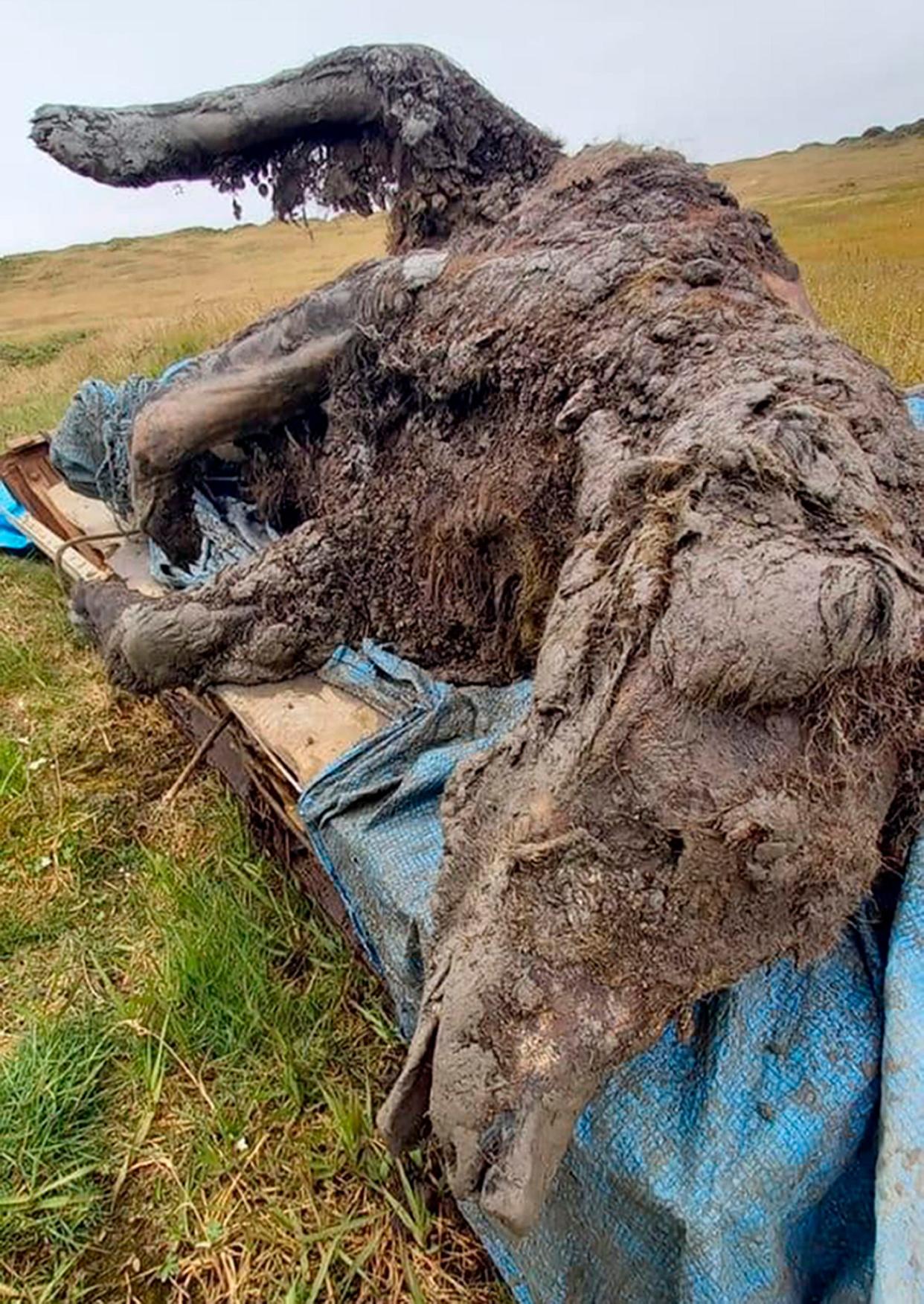
Zazula added that it could be a long time before scientists outside Russia have access to any research from Siberia's permafrost findings.
Since Russia invaded Ukraine in February 2022, its international scientific collaborations have shriveled. A report published in Nature in June 2022 said paleontology in Siberia had been cut off from its peers in other permafrost regions.
"I can't imagine normal scientific diplomatic relationships with Russia for a generation," he said.
Beyond the occasional mummy discovery, Zazula and his colleagues gather about 5,000 to 7,000 fossils from the mines each year.
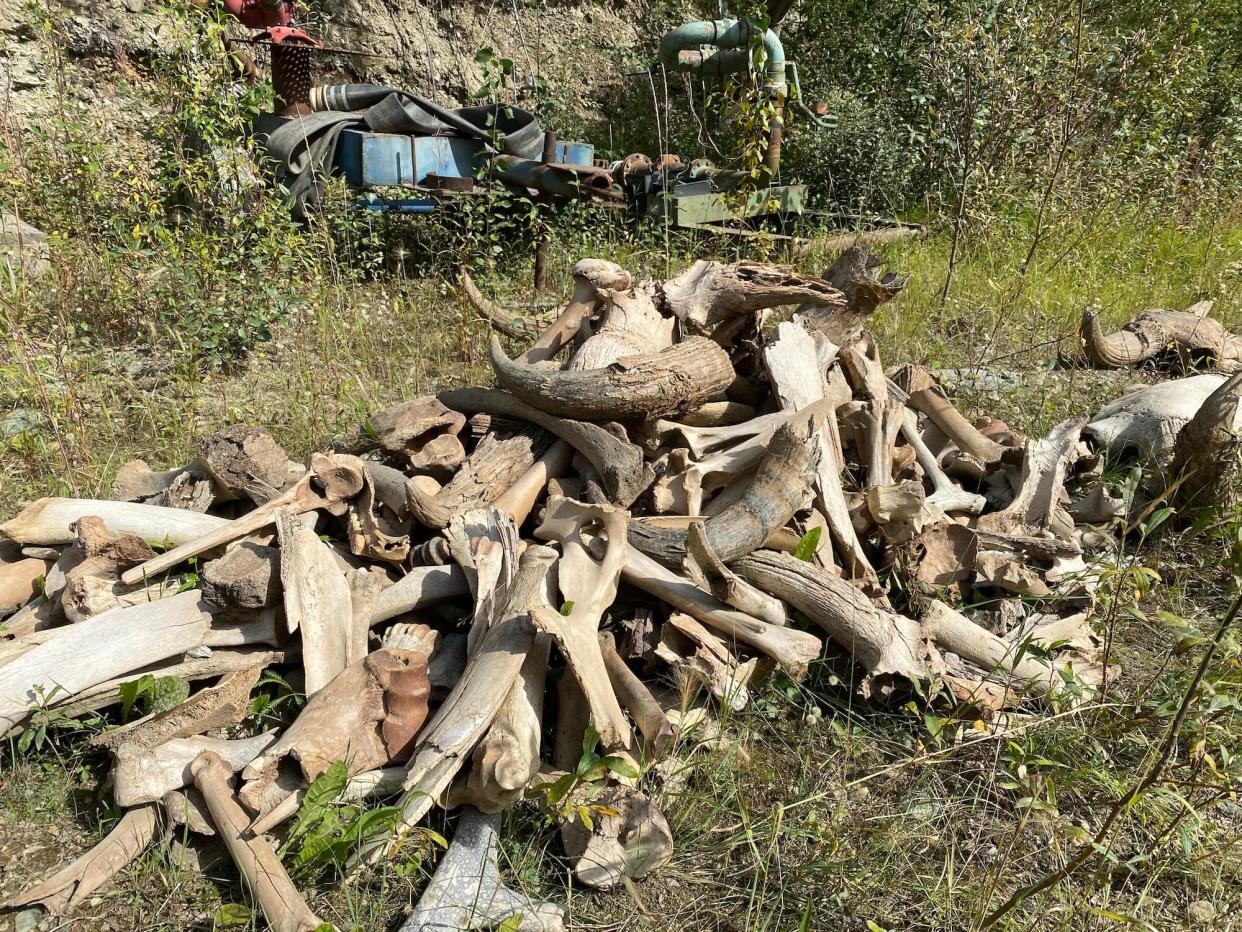
Throughout the gold-mining season, from the start of summer until about September, the Yukon paleontology team makes several trips across the territory's Klondike region to collect fossils from the gold fields.
"We drive back with truckloads of skeletons," Zazula said.
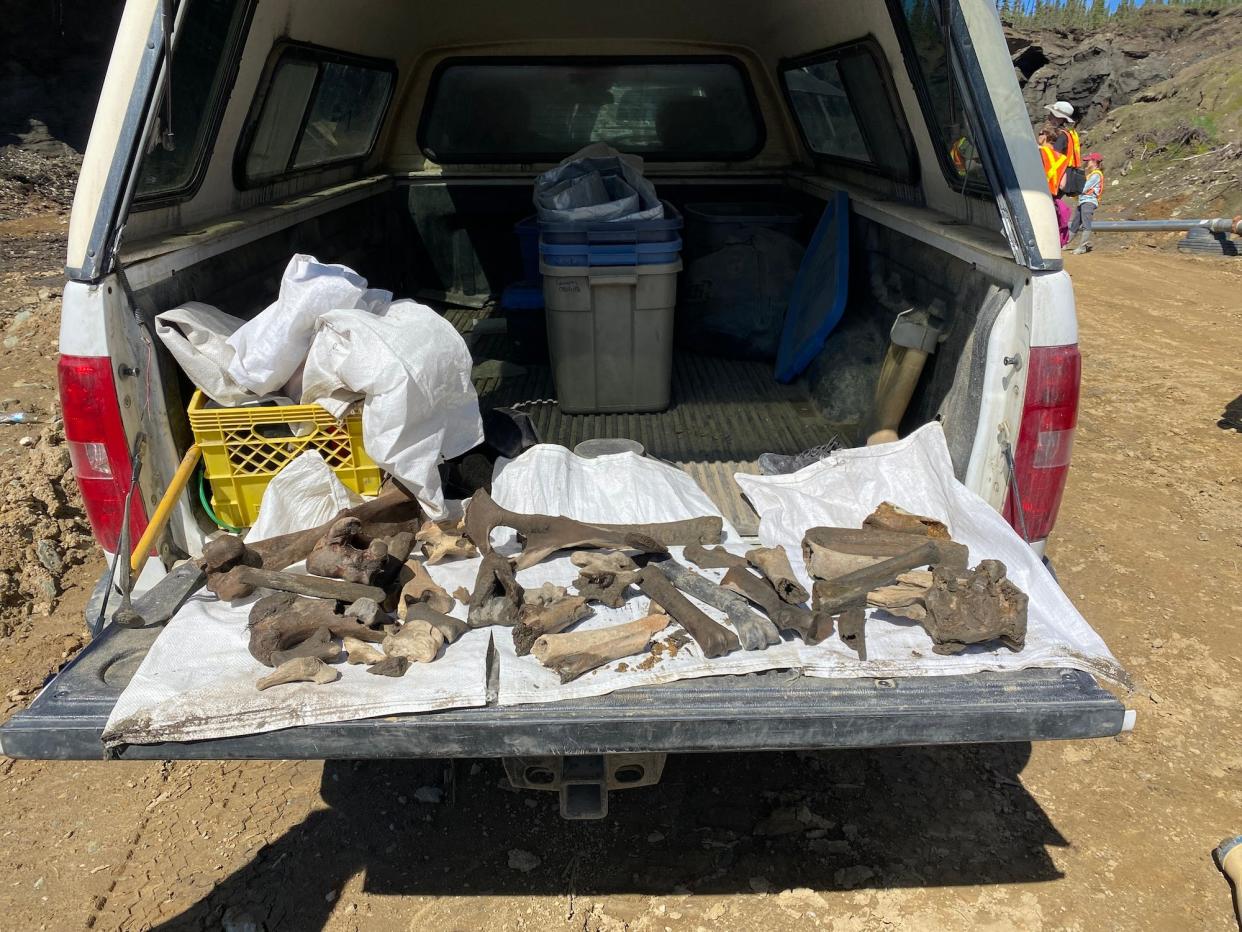
They get everything from skulls to teeth to mammoth tusks. It all gets cataloged and kept in a giant archive that researchers from all over the world can access. Samples of the bones often undergo genetic analysis.
"Permafrost is really seen by geneticists around the world as this incredible untapped — or largely untapped — archive of ancient life," Zazula said.
The bones lead to fascinating discoveries, too, like piecing together the history of horses across the planet.
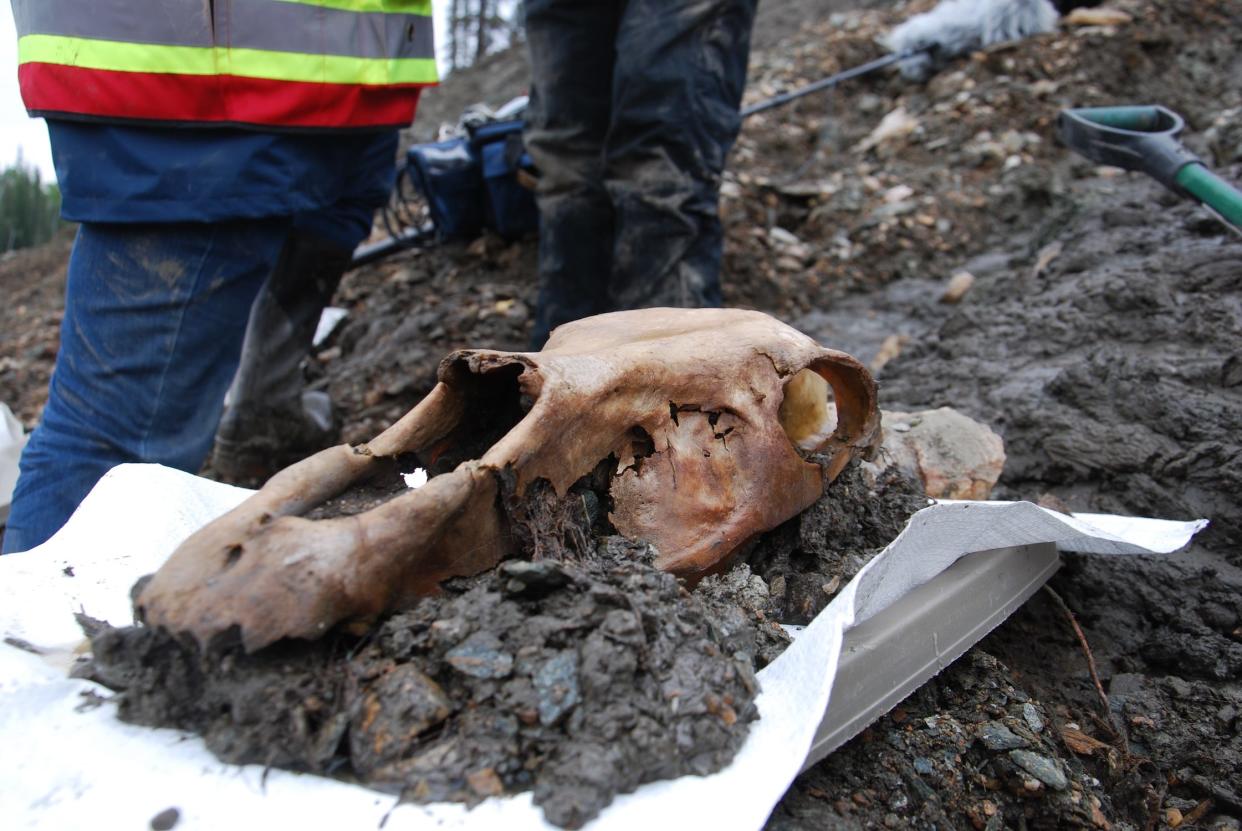
Genetic analysis of the bones of ancient horses has shown that, while horses died out across North America at the end of the Ice Age, some had migrated across the steppes to Asia. The North American horses lived on in Asia and Europe, where humans eventually domesticated them.
"Places like Alaska and Yukon are really the ancestral homeland for all domestic horses," Zazula said.
Scientists can also look for DNA traces in the ancient permafrost itself.
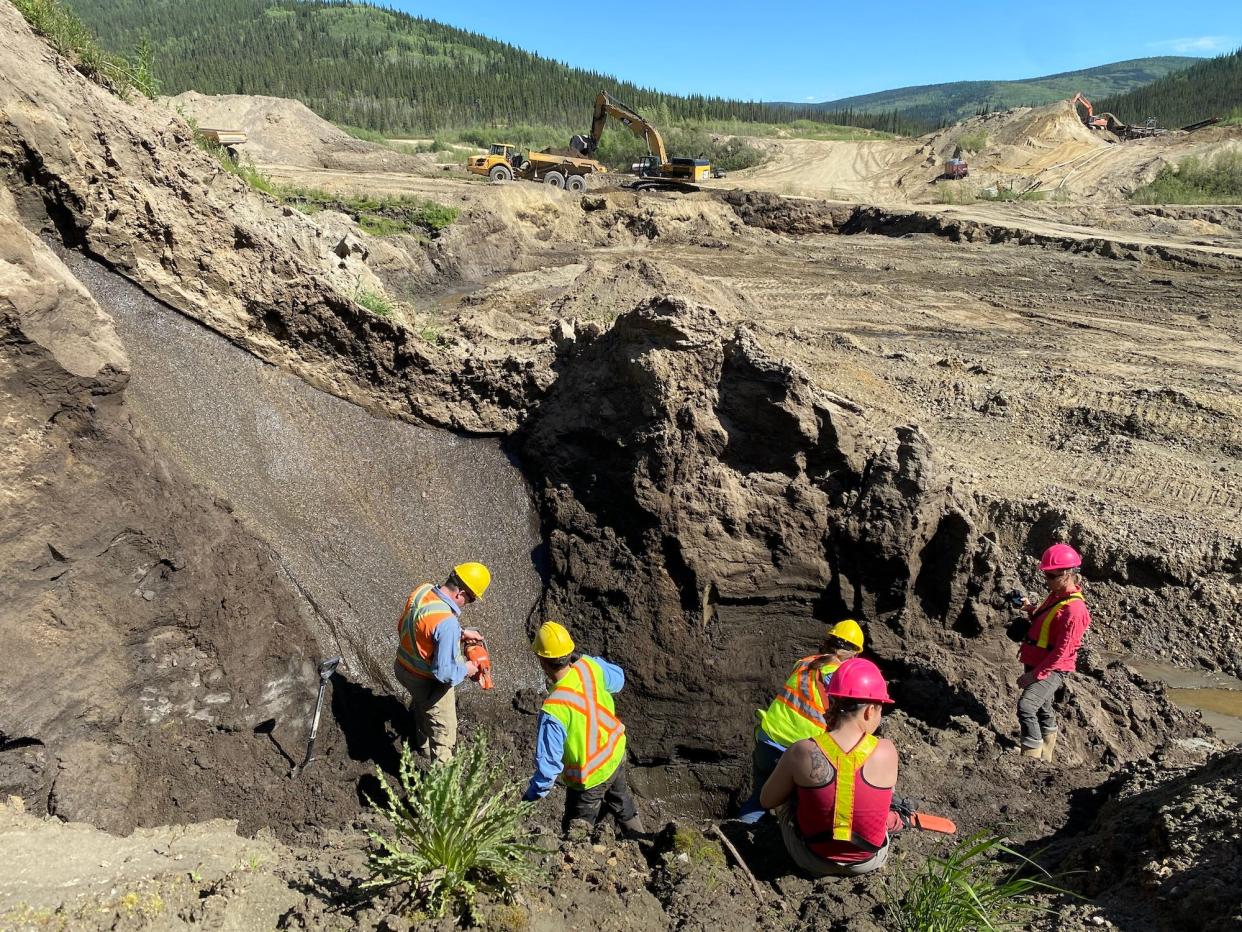
For example, by testing ancient DNA preserved deep in the soil, researchers learned that some mammoths still lived in North America about 5,000 years ago. That's around the time humans started building pyramids in Egypt.
Because the permafrost is thawing across the Arctic, more and more fossils are emerging in new places.
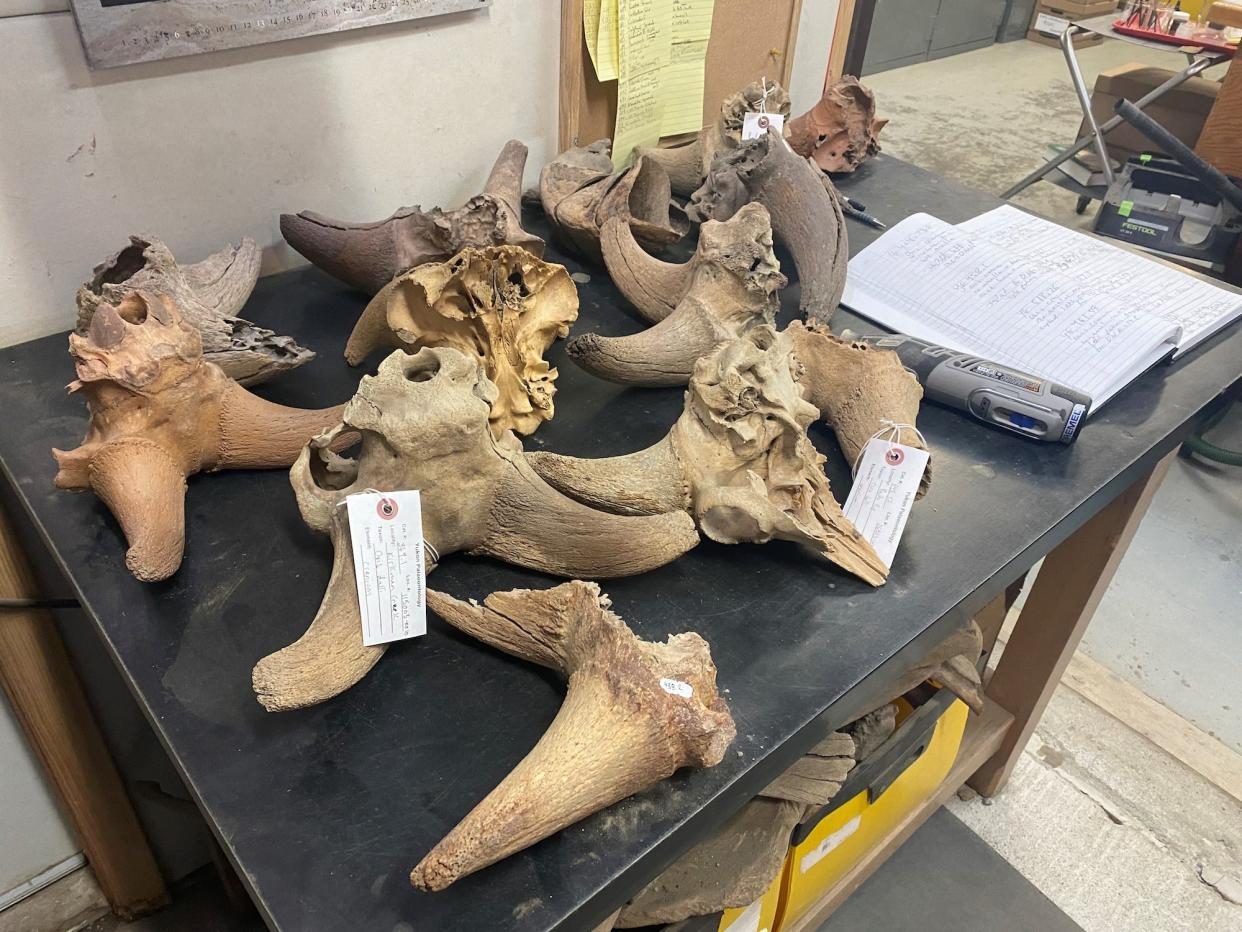
Researchers don't have to rely only on the gold mines anymore. As global temperatures rise, the permafrost is thawing in many places, including Canada and Alaska.
That's accelerating the climate crisis, since thawing permafrost emits a lot of carbon dioxide and methane, driving global temperatures even higher.
Already, landslides due to permafrost thaw have revealed fossilized bones — but no mummies yet, Zazula said.
Paleontologists are keeping their fingers crossed for the next Nun Cho Ga — or even for ancient human mummies in the permafrost.
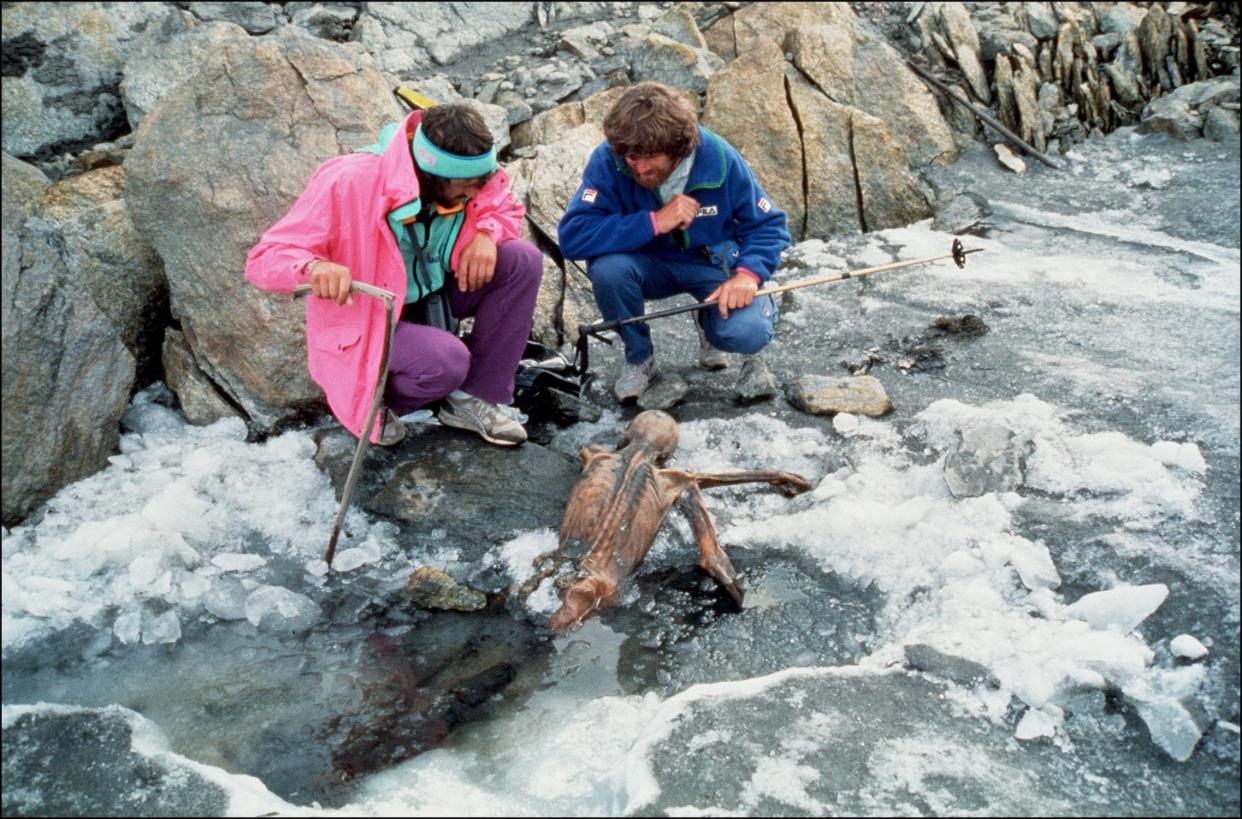
The Holy Grail of ancient mummy discoveries is Ötzi the Iceman, a Neolithic body dating to 3300 BC, discovered on a melting Alps glacier in 1991.
Permafrost could preserve similar human bodies. So far, early humans' tools have been found in the frozen soil, but no Ice Age humans have turned up.
"It'd be exciting," Zazula said. "It would change all of our lives and careers."
Read the original article on Business Insider






